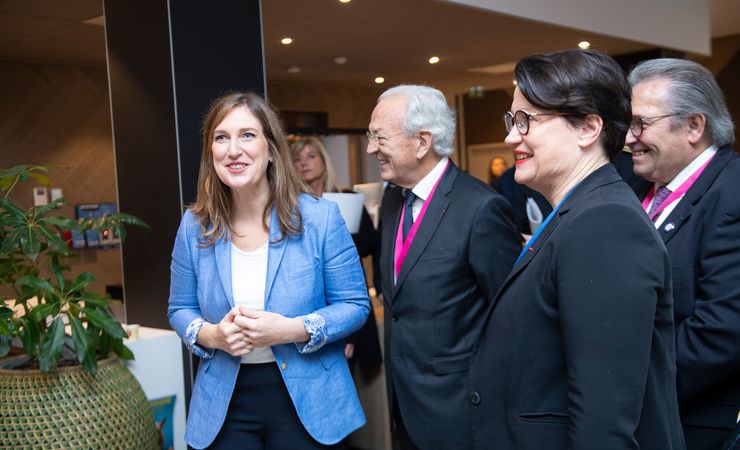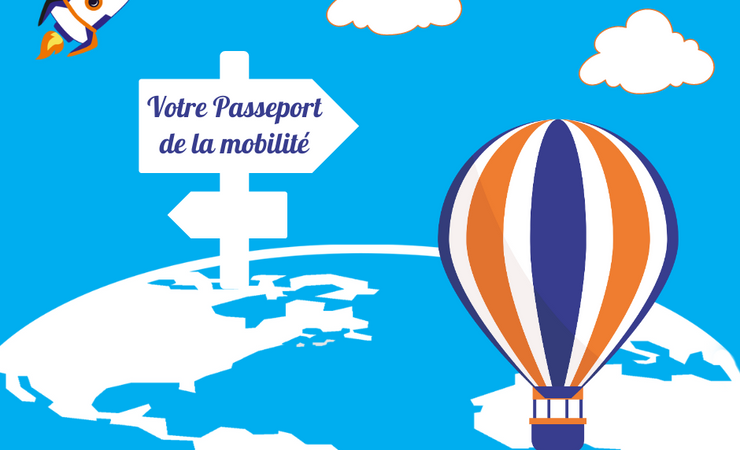
Euro App Mobility partner of Training and Cooperation Activities (TCA)
Actualités
November 2023

Euro App Mobility launches MOBLT
Advise
June 2023
6 minutes

A mobility passport for your work-study students!
Advise
May 2023
4 minutes
Log in to the platform
The construction of a European Higher Education Area (EHEA), officially announced in Vienna in 2010, is the result of the Bologna process, which kicked off in 1999. This concerted effort to implement reforms that could facilitate international mobility and cooperation in higher education has led to important improvements for the 49 participating European countries.
Blog
February 2022
European initiatives taken to develop the European Education and Training area
Although it is not as well-known, there is an equivalent to the Bologna process and the EHEA in the field of vocational education and training (VET). Following the initiative of the European Union institutions, EU member states launched the Copenhagen process in 2002. This process aims to facilitate the mobility of workers and VET learners within the EU, thus contributing to the development of a European Education and Training Area.
This note summarizes the main achievements of the Copenhagen process, pointing out parallels with the Bologna process, as well as other important initiatives of the European Union to facilitate international mobility in VET.
The Copenhagen process
Since the launch of the process by the Copenhagen Declaration, participating countries have regularly met at conferences to evaluate progress made, propose adjustments, and introduce new initiatives. These assessments and new objectives were communicated through the Communiqués of Maastricht (2004), Helsinki (2006), Bordeaux (2008) and Bruges (2010), the Conclusions of Riga (2015), and the Osnabrück Declaration (2020).
In addition to these documents, which are negotiated and approved by the ministers responsible for VET of each participating countries and by the European Commission, European Council Recommendations and Resolutions describe in more details the specific reforms and tools to be implemented (annex 1 provides a list of the most recent of these texts).
For the 2021-2025 period, the Osnabrück Declaration focuses on the following four main areas:
– Resilience and excellence through quality, inclusive and flexible VET
– Establishing a new lifelong learning culture – relevance of C-VET and digitalisation
– Sustainability – a green link in VET
– European Education and Training Area and international VET.
It is important to note that, although the Bologna process and the EHEA include every European Union member state, they are not EU projects. While the European Commission is involved, mostly through its financial support, it is only one participant, among others. The main actors are the 49 countries engaged in the Bologna process and the Council of Europe.
In contrast, the Copenhagen process was initiated by the institutions of the European Union, and the participating countries are EU member states, EU candidate countries and the European Economic Area countries. However, since education is not one of the EU competences, EU institutions contribute through reform recommendations, or the creation of common tools.
Hence, just like in the case of the Bologna process, the implementation of these recommendations is the sole responsibility of the national governments, which thus remain the central players.
Main results of the Copenhagen process
Because of its near 20 years of existence and very broad objectives aiming to improve the quality of Vocational Education and Training (VET) in Europe and to facilitate mobility, the results of the Copenhagen process are numerous. Below are the most important:
The European Education Area 2025
The European Education Area, which the European Commission plans to create by 2025, corresponds to the general policy of the Commission in the field of education for the first half of this decade. Efforts to further develop the European Education Area are organised along six dimensions:
– Quality
– Inuclusion and gender equality
– Green and digital
– Teachers and trainers
– Higher education
– Geopolitical dimension
Hence, the European Education Area is a larger framework supported by the European Commission for the development of quality education, and within which the initiatives of the Copenhagen process can continue to be deployed.
Conclusion
Since the inception of the Copenhagen process in 2002, numerous initiatives within the European Union have already laid the groundwork for a European Education and Training Area, with the objective to improve the quality of VET in the EU and to facilitate the mobility of VET learners and workers.
Even though the long-term goals of the Copenhagen process have still not been reached, and although cooperation and mobility for VET are still not as developed as for higher education, building on these existing initiatives seems like the best approach to further the construction of a European Education and Training Area.
Annexe 1
Below is a list containing the most recent recommendations and decisions published by the European Commission and the European Council on the topic of harmonising the systems and practices of EU member states in the field of vocational education and training: